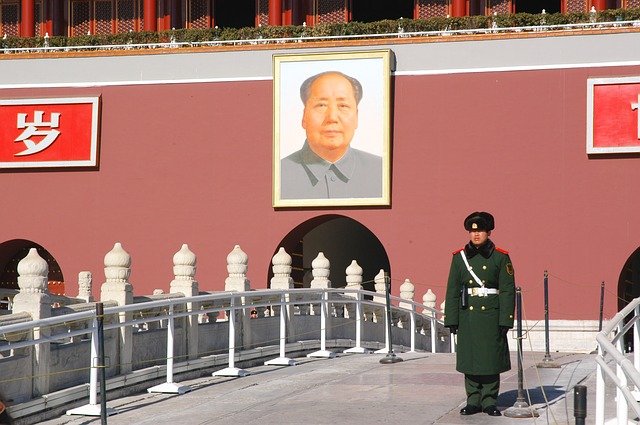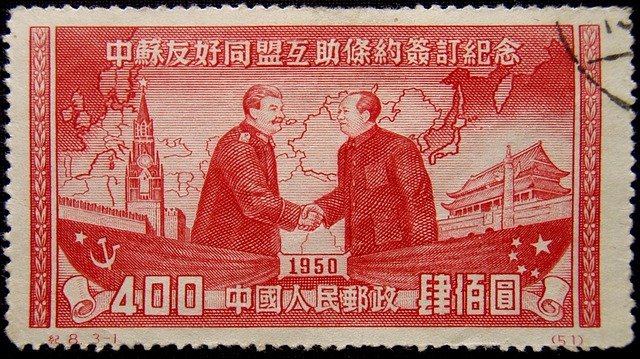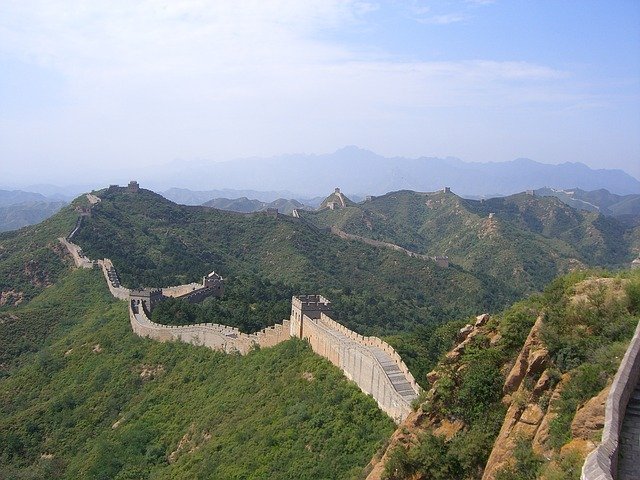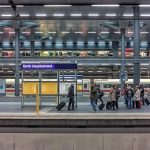
125 years ago today, Mao Zedong was (https://de.wikipedia.org/wiki/Mao_Zedong) was born. He allegedly gave GDR head of state Walter Ulbricht the idea of building a wall through Berlin… at least this is what the biography “Mao. The Unknown Story (https://www.zeit.de/2005/47/P-Mao) of 2005 comes close. But does that remain the only source of ideas and was the need to compartmentalise not more deeply rooted in 1961?
On 8 September 1956, Walter Ulbricht flew to Beijing for the VIII Party Congress of the Communist Party of the People’s Republic of China. Here he met Mao as party leader and head of state of the PRC. Mao had stayed away from the last “Stell-Dich-Ein” of the communist parties in the GDR at the beginning of the year. On 3 January 1956, GDR President Wilhelm Pieck had invited people to Berlin-Pankow to celebrate his 80th birthday. Mao sent his deputy Zhu De (https://de.wikipedia.org/wiki/Zhu_De). c
The “little town of Pankow” was a restricted area near Wilhelm Pieck’s presidential palace. Initially, as in Berlin-Karlshorst, Soviet officers had lived here since August 1945, isolated from the German population behind a green-painted two-metre-high board fence. A “propusk” was required to enter the area. The leadership of the Communist Party of Germany (KPD), which was re-established in June 1945, was also provided with houses here. After the unification of parts of the SPD with the KPD to form the Socialist Unity Party of Germany (SED) in April 1946, the former Social Democratic Party leader Otto Grotewohl was also given a spacious villa in this estate. When the GDR was founded in 1949, the cordon remained in place and many other members of the GDR government were provided with living space here. Some of the houses were converted into guest houses, where Zhu De, for example, or the Soviet head of state Nikita Khrushchev spent the night during his official visits to the GDR. Mao would probably have felt at home here.

In February 1956, at the XXth Party Congress of the Communist Party of the Soviet Union (CPSU) in Moscow, Khrushchev had harshly criticised the leadership style of his predecessor Josef Stalin, much to the displeasure of Ulbricht and Mao. Where did they think this opening up of the communist movement to the people was going to lead? Were the ordinary people already reif for the envisaged progress or would that not endanger the self-appointed elites of the social upheaval and thus the building of communism as a whole? For Ulbricht and Mao (as well as for Stalin ultimately!!) the end always justified the means. A retrospective evaluation of many of their decisions would, in their opinion (and rightly so!!), only be interpreted to their disadvantage. That is why they were united. Khrushchev’s so-called “thaw” policy would ultimately transport them personally to the rubbish heap of history.

The famous Great Wall of China was built as early as the 7th century BC as a defensive wall and today has a length of over 8,000 kilometres. It is the largest human structure in the world. Supposedly, it can even be seen from the moon. If only for national arrogance, in 1956 Mao, who was of the same age, was able to “only” conquer it as a First Secretary of the SED acting Walter Ulbricht give wise advice. At the time, Ulbricht was neither GDR head of state nor chairman of the SED and had to be lectured. During his visit to Beijing, Mao is said to have suggested to Ulbricht that in dealing with the “fascists” and the eternal critics from West Germany, he should prefer the Chinese model: the Great Wall. A wall was very helpful in “keeping certain people away from one’s own territory”, as Mao is said to have expressed it.
Of course, the idea was not entirely new to Walter Ulbricht. He himself had been living behind walls for a long time. When he emigrated to Moscow in the 1930s, he lived with many other communists in the Lux Hotel. (https://de.wikipedia.org/wiki/Hotel_Lux), completely isolated from the normal Muscovites. After his return to Germany in 1945, he moved into a house with his wife, her sister and their adopted daughter in the “little town of Pankow” described above. After the June 1953 riots in the GDR and those in Hungary in 1956 (after Ulbricht’s return from Beijing!!), new measures were planned in Pankow for the security of the SED party leadership. In the north of Berlin in Bernauer Forst near the village of Wandlitz, a new housing estate surrounded by a wall was built for them. When the green wooden board fence in the “little town of Pankow” became increasingly dilapidated in the 1950s, the GDR security authorities had it replaced by a high concrete wall. A piece of this wall still stands today on Güllweg in Berlin Pankow. It looks very much like the last generation of the Berlin Wall and should actually be placed under protection. Ultimately, it looks today as if Walter Ulbricht first walled himself and his comrades in, and finally the entire country he ruled. Mao Zedong and others supported him in this.



